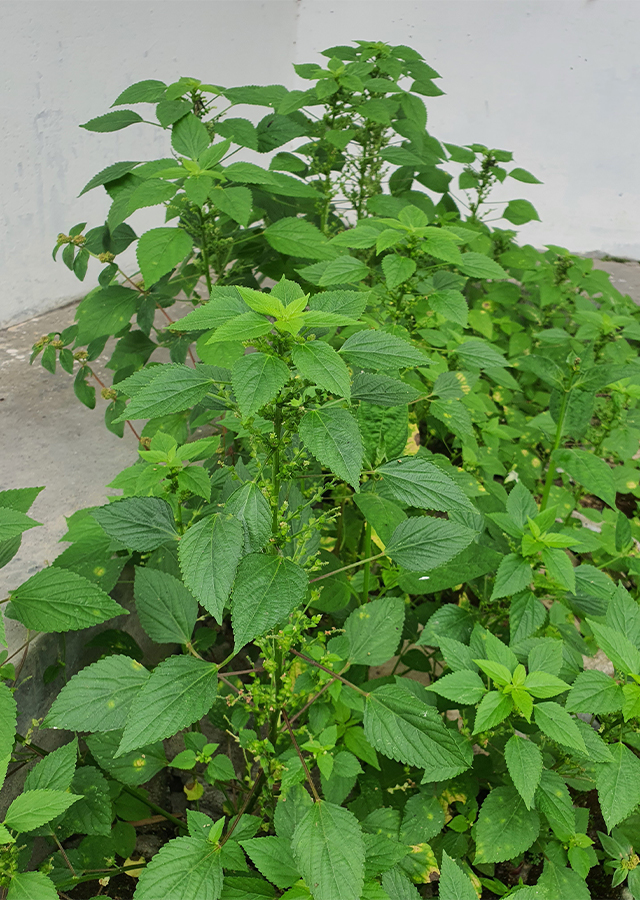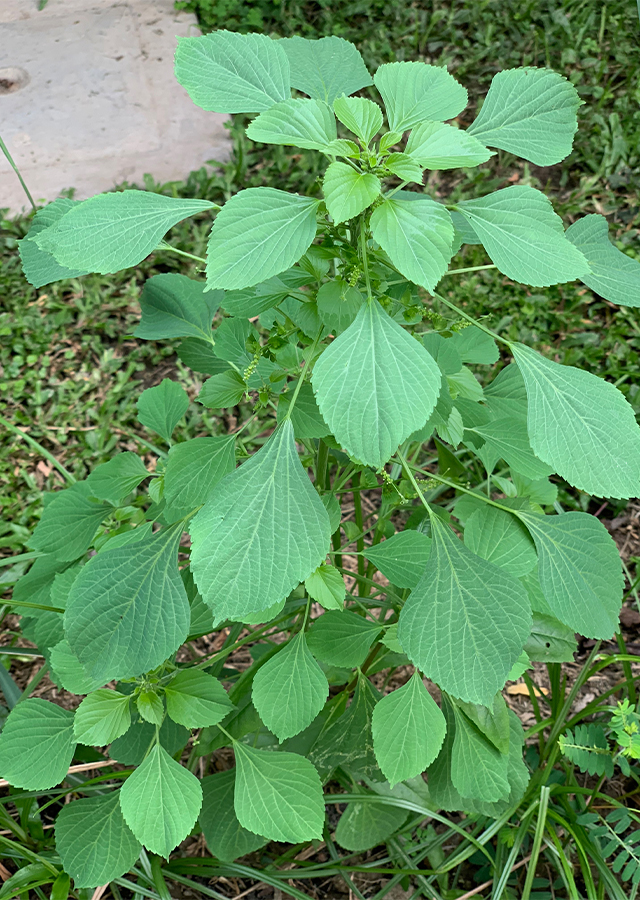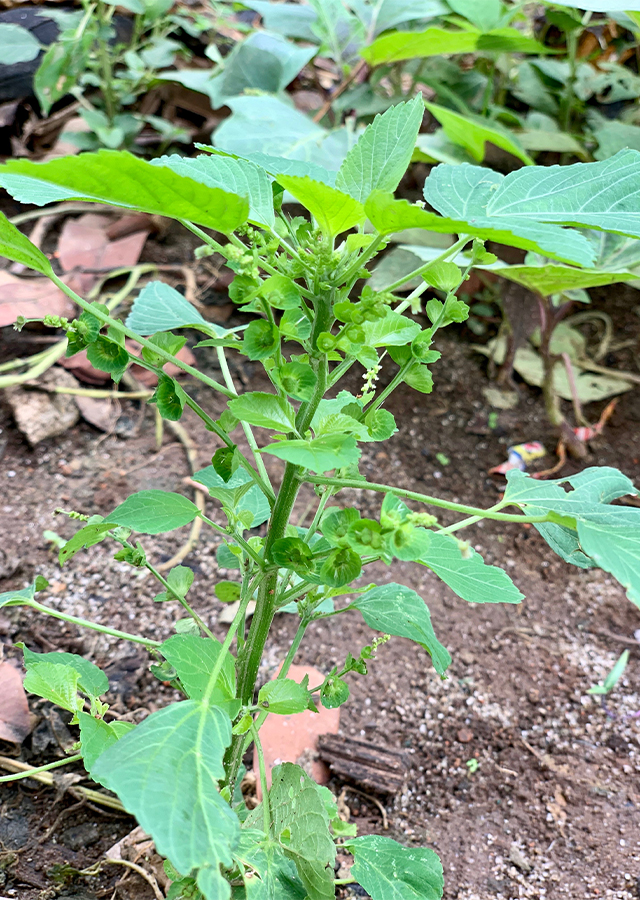Indian nettle
Acalypha indica L.
Euphorbiaceae
Location in our garden
Principal



Synonym
Acalypha caroliniana Blanco
Acalypha decidua Forssk.
Acalypha fimbriata Baill.
Habitus
Herbaceous. A monoecious, annual to sometimes short-lived perennial herb, grows up to 1.5 to 2.5 m tall.
Part Used
Leaves
Roots
Stem
Growing Requirements
Full Sunshine
Need Shade
Habitat
Riverbanks
Rocky Areas
Shrublands
Grassland
Overview
Indian nettle native range is from Eritrea to South Africa, Tropical & Subtropical Asia to the Arabian Peninsula. It is an essential medicinal plant on the islands of the Indian Ocean as well as in India, where its edible shoots are also cultivated. When using the species as a vegetable, caution needs to be taken since it contains many alkaloids as well as hydrocyanic acid.
Vernacular Names
Daun anting-anting (Indonesia), Tie xian (Chinese), Ricinelle des Indes (French), Maraotong (Philippines), and Chika Emas (Malay), Kuppigida (Kannada), Haritamanjari (Sanskrit), Acalifa (Italian).
Agroecology
A. indica occurs on sandy riverbanks and seasonal streams, typically in the shade of thickets, on rocky hillsides as well, sometimes in disturbed places and as a field grass, from sea level up to an altitude of 1,350 m.
Morphology
- Stems - sparingly to densely hairy.
- Leaves - ovate. 3 to 6 cm long, shorter than the long stalks, with toothed margins.
- Flowers - sessile, petals absent, greenish, borne on numerous, lax, erect axillary spikes. The male flowers are very small, clustered near the summit. Female flowers are solitary and scattered, each with a large and leafy bract, 5 to 6 mm long.
- Fruits - a 3-lobed capsule, 2 mm long and concealed by the enlarged bract, often containing only one seed.
- Seeds - ovoid, smooth, and grey.
Cultivation
- Propagation is only through seeds.
- The plants need fair amounts of water and nutrients to grow quickly and stay tender.
Chemical Constituents
Flavanoids, alkaloids, steroids, saponins, aleuron, tannins, cyanogenic glucoside (acalyphin) and pyranoquinolinone alkaloid (flindersin).
Traditional Medicinal Uses
Medicinal Uses
- To treat asthma and pneumonia, A. indica is used as an expectorant.
- Has effective antibacterial and antifungal, anthelmintic, anti-inflammatory, anti-cancer, anti-diabetes, anti-hyperlipidemic, anti-obesity, anti-venom, hepatoprotective, anti-hypoxia, and medication for wound healing activities.
Traditional Uses
- A leaf decoction is used as a massage cream in Comoros to relieve pain in the joints.
- A root decoction is also taken in Seychelles to treat intestinal worms and stomachache. A leaf infusion of Jumellea fragrans (Thouars) Schltr. along with a tuber infusion. It is used to treat bronchitis and is sweetened with honey. The leaves, along with the roots of Tylophora indica (Burm.f.) Merr are emetic and an infusion. In the event of an overdose, it is brought to Réunion.
- In Madagascar, the crushed aerial sections are applied to skin parasites and an infusion is given as a purgative and vermifuge.
- For scabies and other skin issues, the juice of crushed leaves combined with salt or a decoction of the aerial parts is applied in Mauritius. For headache treatment, a poultice made from the whole plant is added.
- In Malay, the leaf is used as a tea for its therapeutic effect
- The leaf sap is taken as an emetic, and a laxative is taken as the root decoction.
- Ground leaves in the water are used for this purpose in Namibia. In maggot-infested wounds, leaf powder is added.
Part Used
Reference Sources
Silalahi M. 2019. Acalypha indica: Pemanfaatan dan bioaktivitasnya. Titian Ilmu 11(2): 81-86.
